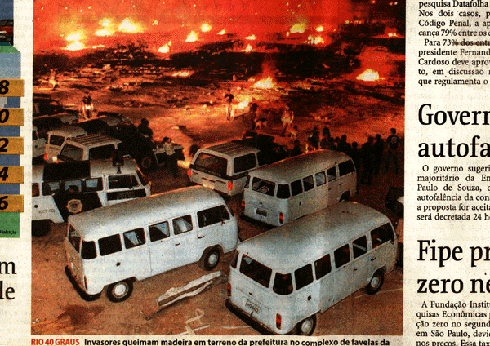
The city Sao Paulo is huge. During our short trip there in August, we met many people, heard many stories, sociological details and personal experiences, saw a lot and still only a thin slice of what is visible in the city, and found out even less about that which is invisible. Even people who have lived in S‹o Paulo for most of their lives know only segments, and nobody we met seemed to have a kind of general overview and sense of orientation of the city. Over the last 100 years, Sâo Paulo has grown from an insignificant little town, 50 kilometres inland and uphill from the Atlantic, into an unbounded megalopolis. There might be 8 million 'legal' inhabitants, another 8 million in illegally built houses and settlements, but whether this figure is accurate, and how fast the favelas are growing in and around the main city territory, is unclear. For urban planners this situation means that they won't even try to understand Sao Paulo as a whole. We went to Brazil following an invitation by the Goethe Institut S‹o Paulo, where Marina Ludemann had organised two evening lectures and a workshop for us. The aim of the trip was to get to know the city a little and to see whether it would be possible to do a S‹o Paulo follow-up of the IO-Dencies project which Knowbotic Research is doing in Tokyo in October 1997. For this it was also important to find potential co-operation partners who would be able to help research, plan and organise the project. In retrospect it seems that the results of the trip were very positive, and that there is a great potential for doing a project in Sao Paulo in 1998, if the circumstances allow. (Andreas Broeckmann, Trave_Log, August 1997)
city aspect
Knowbotic research visited 2times Sao Paulo to prepare the IO_dencies plattform with a few young urbanists and architects.